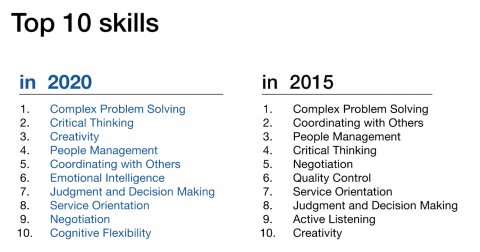Deprecated: Creation of dynamic property WP_Term::$cat_ID is deprecated in /home/homeofjam/wordpress_repo/wp-includes/category.php on line 357
Deprecated: Creation of dynamic property WP_Term::$category_count is deprecated in /home/homeofjam/wordpress_repo/wp-includes/category.php on line 358
Deprecated: Creation of dynamic property WP_Term::$category_description is deprecated in /home/homeofjam/wordpress_repo/wp-includes/category.php on line 359
Deprecated: Creation of dynamic property WP_Term::$cat_name is deprecated in /home/homeofjam/wordpress_repo/wp-includes/category.php on line 360
Deprecated: Creation of dynamic property WP_Term::$category_nicename is deprecated in /home/homeofjam/wordpress_repo/wp-includes/category.php on line 361
Deprecated: Creation of dynamic property WP_Term::$category_parent is deprecated in /home/homeofjam/wordpress_repo/wp-includes/category.php on line 362
Deprecated: Creation of dynamic property WP_Term::$cat_ID is deprecated in /home/homeofjam/wordpress_repo/wp-includes/category.php on line 357
Deprecated: Creation of dynamic property WP_Term::$category_count is deprecated in /home/homeofjam/wordpress_repo/wp-includes/category.php on line 358
Deprecated: Creation of dynamic property WP_Term::$category_description is deprecated in /home/homeofjam/wordpress_repo/wp-includes/category.php on line 359
Deprecated: Creation of dynamic property WP_Term::$cat_name is deprecated in /home/homeofjam/wordpress_repo/wp-includes/category.php on line 360
Deprecated: Creation of dynamic property WP_Term::$category_nicename is deprecated in /home/homeofjam/wordpress_repo/wp-includes/category.php on line 361
Deprecated: Creation of dynamic property WP_Term::$category_parent is deprecated in /home/homeofjam/wordpress_repo/wp-includes/category.php on line 362
Deprecated: Creation of dynamic property WP_Term::$cat_ID is deprecated in /home/homeofjam/wordpress_repo/wp-includes/category.php on line 357
Deprecated: Creation of dynamic property WP_Term::$category_count is deprecated in /home/homeofjam/wordpress_repo/wp-includes/category.php on line 358
Deprecated: Creation of dynamic property WP_Term::$category_description is deprecated in /home/homeofjam/wordpress_repo/wp-includes/category.php on line 359
Deprecated: Creation of dynamic property WP_Term::$cat_name is deprecated in /home/homeofjam/wordpress_repo/wp-includes/category.php on line 360
Deprecated: Creation of dynamic property WP_Term::$category_nicename is deprecated in /home/homeofjam/wordpress_repo/wp-includes/category.php on line 361
Deprecated: Creation of dynamic property WP_Term::$category_parent is deprecated in /home/homeofjam/wordpress_repo/wp-includes/category.php on line 362
Deprecated: Creation of dynamic property WP_Term::$cat_ID is deprecated in /home/homeofjam/wordpress_repo/wp-includes/category.php on line 357
Deprecated: Creation of dynamic property WP_Term::$category_count is deprecated in /home/homeofjam/wordpress_repo/wp-includes/category.php on line 358
Deprecated: Creation of dynamic property WP_Term::$category_description is deprecated in /home/homeofjam/wordpress_repo/wp-includes/category.php on line 359
Deprecated: Creation of dynamic property WP_Term::$cat_name is deprecated in /home/homeofjam/wordpress_repo/wp-includes/category.php on line 360
Deprecated: Creation of dynamic property WP_Term::$category_nicename is deprecated in /home/homeofjam/wordpress_repo/wp-includes/category.php on line 361
Deprecated: Creation of dynamic property WP_Term::$category_parent is deprecated in /home/homeofjam/wordpress_repo/wp-includes/category.php on line 362
Deprecated: Creation of dynamic property WP_Term::$cat_ID is deprecated in /home/homeofjam/wordpress_repo/wp-includes/category.php on line 357
Deprecated: Creation of dynamic property WP_Term::$category_count is deprecated in /home/homeofjam/wordpress_repo/wp-includes/category.php on line 358
Deprecated: Creation of dynamic property WP_Term::$category_description is deprecated in /home/homeofjam/wordpress_repo/wp-includes/category.php on line 359
Deprecated: Creation of dynamic property WP_Term::$cat_name is deprecated in /home/homeofjam/wordpress_repo/wp-includes/category.php on line 360
Deprecated: Creation of dynamic property WP_Term::$category_nicename is deprecated in /home/homeofjam/wordpress_repo/wp-includes/category.php on line 361
Deprecated: Creation of dynamic property WP_Term::$category_parent is deprecated in /home/homeofjam/wordpress_repo/wp-includes/category.php on line 362
In 2016 it was predicted that global investment in digital transformation initiatives would reach $2.2 trillion by 2019. It is therefore timely to discuss the challenges and goals companies should address when planning to deliver digital transformation.
We often focus on the technology element, but according to Andrew Greenway in his book ‘Digital Transformation at Scale: Why the Strategy Is Delivery’, “Digital Transformation is not all about technology; it is about changing the way you work.”
In my previous article, we looked at the importance of seeking to understand what you are aiming to achieve from your digital transformation, understanding that you are not starting from scratch, as well as managing the change for your organisation, its employees and its customers.
In this article, we will move from discussing your technology to discussing your greatest resource, your people, providing the steps your organisation can take to upskill a team for digital transformation, while supporting them to navigate the ever-changing landscape.
Assessing skill sets

It is important to complete an audit of what skills you need to undergo digital transformation, and then gain an understanding of what your team is capable of in relation to the project’s tasks and goals.
Where there is a skills gap you will need to invest in your team to develop their competencies and capabilities. While buying in the resource as and when required is an option, this approach puts your business at risk of constantly needing to outsource work, which is particularly risky where errors are identified.
Bringing in the resource can also change your company culture as they will have a different way of working to those employees who may have been with your business for some time. A blended approach that focuses on developing your staff’s knowledge while complementing them with an external resource as and when required is often the best approach.
It is important you do not allow yourself to be left behind. You need to understand what skills are required now to complete the transformation, who has them and who could be developed to achieve them. Do some homework and build a general awareness of the technologies within your business and what they deliver now and will deliver in the future.
Multidisciplinary business

The way technology is moving may require you to create a multidisciplinary business that can bring together teams that can deliver your future objectives. A multidisciplinary team may consist of a product manager, project manager, lead developer, digital designer, user researcher, UX consultant, content editor, Google Analytics specialist, dev ops, front and back developers, and a QA tester.
One of the first challenges with creating a digital transformation delivery team is having to bring people together who have either moved location to join the team or are working across different locations, often in different countries, which can create cultural conflict issues.
Another challenge arises if your team works across different time zones as communication can end up being non-instant, leading to misinterpretation, rather than in real-time where team members can ask questions and obtain the answers they need, preventing confusion and delays. The key to overcoming these challenges are clear communication and well-defined objectives at the outset and throughout.
Creating such teams can cause a lack of understanding between you and the new team members as well as between the team itself. It can sometimes be difficult to understand new team members who will have vastly different subject matter knowledge to that which you and your team know. They may also have a different way of working and have built a different understanding of company culture.
Merging a new and old workforce can create a culture shock and therefore needs to be carefully managed, otherwise you run the risk of old and new staff being in battle with one another, putting your digital transformation at risk.
Lead with empathy

In these two articles, we’ve looked at how you can start and maintain digital transformation and with this comes challenges for your team. They are dealing with constant change, having to question the status quo, making changes where things may be perceived to still be working, and identifying an individual’s capabilities to carry out their role now and in the future.
All of this has an obvious impact on the individuals involved and this needs to be managed sensitively and carefully.
What is important here is to lead with empathy. This starts with creating an environment built on trust and respect, by creating rapport with your team and building relationships with them. This can be greatly enhanced by understanding the individual’s skill set, what their key deliverables are, and what pressures they are likely to experience.
You need to create time and space to actively listen to your team to take a temperature check on how they are. Ask direct questions to avoid having to make assumptions, then carefully measure the response you receive, looking beyond the words being said and tuning yourself in to each individual’s body language. Be present in the moment and focus on the individuals you are communicating with and not other challenges or tasks you have in the back of your mind.
Think about how each team member takes in information and speak their language, presenting information in multiple ways. This creates a shared understanding across a team who may assimilate information differently from one another.
For example, with the more ‘visual’ members of your team, ensure you are presenting them the information visually e.g. using a Gantt Chart or a wireframe. For auditory people, give them the opportunity to listen to the plans and talk it through with them to help them to make sense of the overall project.
Digital transformation: no easy feat, but essential
When considering your greatest resource – your people – digital transformation creates both challenge and opportunity. It is important to understand that you will be asking your team to venture into new territories and learn new skills, which may make them feel like they are lacking the knowledge and therefore have a weakness.
Added to this you will often need to recruit in new talent which can leave your team feeling left behind or obsolete. Make sure they know you plan on bringing them with you and are willing to invest time and money into their development to future-proof them for the fourth revolution of digital.
According to Forbes, ‘70% of corporate transformation efforts fail as a result of being unfocused, uninspired and unsuccessful’, therefore, I leave you with two questions to have at the forefront of your mind when considering digital transformation:
- How will this technology fit into your existing business?
- What problem are you trying to solve, both at the people level and an operational level?
Deprecated: Creation of dynamic property WP_Term::$cat_ID is deprecated in /home/homeofjam/wordpress_repo/wp-includes/category.php on line 357
Deprecated: Creation of dynamic property WP_Term::$category_count is deprecated in /home/homeofjam/wordpress_repo/wp-includes/category.php on line 358
Deprecated: Creation of dynamic property WP_Term::$category_description is deprecated in /home/homeofjam/wordpress_repo/wp-includes/category.php on line 359
Deprecated: Creation of dynamic property WP_Term::$cat_name is deprecated in /home/homeofjam/wordpress_repo/wp-includes/category.php on line 360
Deprecated: Creation of dynamic property WP_Term::$category_nicename is deprecated in /home/homeofjam/wordpress_repo/wp-includes/category.php on line 361
Deprecated: Creation of dynamic property WP_Term::$category_parent is deprecated in /home/homeofjam/wordpress_repo/wp-includes/category.php on line 362
Deprecated: Creation of dynamic property WP_Term::$cat_ID is deprecated in /home/homeofjam/wordpress_repo/wp-includes/category.php on line 357
Deprecated: Creation of dynamic property WP_Term::$category_count is deprecated in /home/homeofjam/wordpress_repo/wp-includes/category.php on line 358
Deprecated: Creation of dynamic property WP_Term::$category_description is deprecated in /home/homeofjam/wordpress_repo/wp-includes/category.php on line 359
Deprecated: Creation of dynamic property WP_Term::$cat_name is deprecated in /home/homeofjam/wordpress_repo/wp-includes/category.php on line 360
Deprecated: Creation of dynamic property WP_Term::$category_nicename is deprecated in /home/homeofjam/wordpress_repo/wp-includes/category.php on line 361
Deprecated: Creation of dynamic property WP_Term::$category_parent is deprecated in /home/homeofjam/wordpress_repo/wp-includes/category.php on line 362
Deprecated: Creation of dynamic property WP_Term::$cat_ID is deprecated in /home/homeofjam/wordpress_repo/wp-includes/category.php on line 357
Deprecated: Creation of dynamic property WP_Term::$category_count is deprecated in /home/homeofjam/wordpress_repo/wp-includes/category.php on line 358
Deprecated: Creation of dynamic property WP_Term::$category_description is deprecated in /home/homeofjam/wordpress_repo/wp-includes/category.php on line 359
Deprecated: Creation of dynamic property WP_Term::$cat_name is deprecated in /home/homeofjam/wordpress_repo/wp-includes/category.php on line 360
Deprecated: Creation of dynamic property WP_Term::$category_nicename is deprecated in /home/homeofjam/wordpress_repo/wp-includes/category.php on line 361
Deprecated: Creation of dynamic property WP_Term::$category_parent is deprecated in /home/homeofjam/wordpress_repo/wp-includes/category.php on line 362
Deprecated: Creation of dynamic property WP_Term::$cat_ID is deprecated in /home/homeofjam/wordpress_repo/wp-includes/category.php on line 357
Deprecated: Creation of dynamic property WP_Term::$category_count is deprecated in /home/homeofjam/wordpress_repo/wp-includes/category.php on line 358
Deprecated: Creation of dynamic property WP_Term::$category_description is deprecated in /home/homeofjam/wordpress_repo/wp-includes/category.php on line 359
Deprecated: Creation of dynamic property WP_Term::$cat_name is deprecated in /home/homeofjam/wordpress_repo/wp-includes/category.php on line 360
Deprecated: Creation of dynamic property WP_Term::$category_nicename is deprecated in /home/homeofjam/wordpress_repo/wp-includes/category.php on line 361
Deprecated: Creation of dynamic property WP_Term::$category_parent is deprecated in /home/homeofjam/wordpress_repo/wp-includes/category.php on line 362
Even though digital transformation has conceptually been around for almost 30 years, it is still somewhat seen as a buzzword. Categorising it as such creates a distance between organisations and digital transformation, as well as the leaders driving it forward.
This distance can lead to companies falsely believing it is something on the horizon rather than the truth that it is upon us now, and has been for some time. No longer can organisations and their leaders carry the misperception of not having time for this and not seeing it as the immediate problem it now is.
“Worldwide investment in digital transformation initiatives will reach $2.2 trillion in 2019, predicted in 2016”.
https://auriga.com/blog/2016/digital-transformation-history-present-and-future-trends/
We’ve arrived at the fourth industrial revolution and at the core of this is digital technology. Digital technology is changing at a rapid rate and this can leave organisations, in particular their IT departments, feeling like they are chasing the butterfly. This ever-changing and fast-moving landscape can lead to panic and, in the extreme, companies being over-cautious, leading to paralysis restricting forward movement.
To change or not to change
Those organisations or professionals who might be categorised as ‘old tech’ can often find themselves in a position of resting on their laurels.
A lack of understanding of the current landscape and the digital future leads to the sage response of “we’ve always done things this way and it hasn’t gone wrong yet”. This may well be true, but it doesn’t mean that things cannot be improved.
Organisations focusing on digital transformation often feel like change is being forced upon them rather than something they’re choosing and implementing – and this restricts ‘buy in’ from the most influential decision makers within a business.
Add to this the rapid rate of change leading to those working in digital transformation having to continually update and learn new skills to stay ahead of the curve. This leads to talent deficiencies within organisations as well as globally within the digital and technology industries.
Constant change can often leave people feeling fatigued. Often the previous or current implementation of digital transformation can be old at the point at which it is ‘live’ when only months ago it was the newest solution.
Digital Transformation is not all about technology; it is about changing the way you work
Andrew Greenway, Digital Transformation at Scale: Why the Strategy Is Delivery
Over two articles I will share with you the steps to take to create a successful digital transformation. In part one we will focus on getting underway!
Seek first to understand

It is important to be clear on the vision set for your organisation’s digital transformation. A lack of clarity leads to you spending more time and money than is necessary.
Set immediate goals that can deliver change in the short term and ensure these are achievable, tangible, realistic and low risk. Then, just get started! We are led to believe that digital transformation should be managed as a major programme, but it can often be simplified into smaller projects that culminate in achieving a larger goal.
The first step is an audit of what you already know about your users and how they interact with you. This data can be collated from multiple sources e.g. user research groups, web traffic data and call centre data.
A wider recommendation is to make small and immediate changes, which will allow you to get feedback from users and use this research data to inform your next step. This is an iterative process with small quick wins, where you should aim for good enough, rather than perfect. The aim is to improve over time, identifying and fixing flaws based upon the data rather than anecdotes and hearsay. This can feel uncomfortable at first.
It is important to have the right team in place to deal with this, including personnel from across a variety of different functions. The team should be capable of agile working, meaning they can focus on goals over a short term. This will allow them to gain data quickly and identify, celebrate and fix failures.
Making errors on a small scale mitigates risk for the organisation. Where errors are not made these wins can be celebrated, supporting the team to maintain momentum to the wider goals and the next stage of the project.
Change, change, change

Change is upon you and you need to get on board. Those companies who don’t accept the importance of digital risk being left behind in the technological race. It’s time to embrace change and this is going to push you into your stretch zone. At any given time an individual is within one of their three zones – either comfort, stretch, or panic.
Your comfort zone means you are completing tasks or activities that are easy and effortless with little consideration or concentration required, these tasks are often unconscious. Your stretch zone is where you are feeling uncomfortable and having to think about the task you are completing and the actions you are taking, as this may be the first time you have had to deal with this challenge.
The good news is all growth and development takes place in the stretch zone and tasks completed in this area become key learnings that will often transition into your comfort zone.
Finally, the panic zone is where stress triggers you into a fight or flight response, inhibiting change and creating reactive action. Some organisations may panic when considering digital transformation, and have therefore chosen flight mode to their detriment.
While these zones are specific to an individual they also work when applied to an organisation, ask yourself where is your organisation on digital transformation right now – comfort, stretch, or panic?
You’re not starting from scratch

Often we can be led to believe we need to start all over again and replace all of our technology and systems, but this isn’t the case. Start by being proactive and assessing the technology you already have and its potential to be tweaked to meet the requirements of your users.
The key is to make proper use of the technology you already have, making it work harder through automation, thereby freeing up your time to work on the bigger challenges.
Remember, transformation is completed over a long time frame, you don’t have to go from using paper to being paperless and completely automated. Find the steps in between and walk these first.
You will need to get your team to buy into this approach, as they might have become obsessed with the latest technology and buzz words. Teams can often believe it will be easier to buy in technology that does everything rather than repurposing and adding to the technology you already have, but this is the lazy option.
From experience, it will be harder at first to audit what you have, but it will be quicker to add to this than launch a brand new system.
One final thing to bear in mind is that technology is out-dated once it’s ‘live’. Digital transformation is a living thing that needs to adapt to the ever-changing digital landscape. Therefore, updates to your new digital transformation technology/software should be applied regularly. It is important you future proof your business by ensuring you have a budget for keeping your technology and processes up to date.
]]>Deprecated: Creation of dynamic property WP_Term::$cat_ID is deprecated in /home/homeofjam/wordpress_repo/wp-includes/category.php on line 357
Deprecated: Creation of dynamic property WP_Term::$category_count is deprecated in /home/homeofjam/wordpress_repo/wp-includes/category.php on line 358
Deprecated: Creation of dynamic property WP_Term::$category_description is deprecated in /home/homeofjam/wordpress_repo/wp-includes/category.php on line 359
Deprecated: Creation of dynamic property WP_Term::$cat_name is deprecated in /home/homeofjam/wordpress_repo/wp-includes/category.php on line 360
Deprecated: Creation of dynamic property WP_Term::$category_nicename is deprecated in /home/homeofjam/wordpress_repo/wp-includes/category.php on line 361
Deprecated: Creation of dynamic property WP_Term::$category_parent is deprecated in /home/homeofjam/wordpress_repo/wp-includes/category.php on line 362
Deprecated: Creation of dynamic property WP_Term::$cat_ID is deprecated in /home/homeofjam/wordpress_repo/wp-includes/category.php on line 357
Deprecated: Creation of dynamic property WP_Term::$category_count is deprecated in /home/homeofjam/wordpress_repo/wp-includes/category.php on line 358
Deprecated: Creation of dynamic property WP_Term::$category_description is deprecated in /home/homeofjam/wordpress_repo/wp-includes/category.php on line 359
Deprecated: Creation of dynamic property WP_Term::$cat_name is deprecated in /home/homeofjam/wordpress_repo/wp-includes/category.php on line 360
Deprecated: Creation of dynamic property WP_Term::$category_nicename is deprecated in /home/homeofjam/wordpress_repo/wp-includes/category.php on line 361
Deprecated: Creation of dynamic property WP_Term::$category_parent is deprecated in /home/homeofjam/wordpress_repo/wp-includes/category.php on line 362
Most project managers will experience times when it feels like their teams don’t understand them. This tends to occur when chaos and confusion arises in a project; nothing seems aligned, team members are completing the wrong tasks and people seem to be wasting time, energy and resources.
At the root of some of these challenges is a team member’s lack of understanding, leading to impaired thinking and poor decision making, causing delays and ultimately missing deadlines.
In extreme cases individuals stop taking ownership of tasks and their part within the project, ultimately not caring and damaging the relationships between themselves, the rest of the team and the project manager.
Why don’t they understand? Although difficult, it is important for project managers to review their own involvement to date and recognise that maybe they don’t understand the project as best they could.
Often there can be an expectation that the project manager has an in-depth understanding of the technical elements of a project, yet this is not required in order to deliver a project itself.
The project manager’s lack of understanding can sometimes lead to poor decision making that is reactive to events and challenges rather than proactive. This results in the decisions made often having to be revoked and replaced with another approach.
To avoid relationship breakdown on a project, here are five tips for project managers and team leads to ensure team members fully understand the project throughout its lifecycle.
It’s ok not to know everything

Remember the role of the project manager is to facilitate the project and put all the interdisciplinary components in the best place for the team to be able to deliver.
What is required, at its simplest, is to understand what needs to be done by when, and who in the team is capable of and responsible for each deliverable. It is therefore important to talk to and link the people who have the knowledge.
Keep conversations open and honest

The basis of all good relationships is trust. Everyone comes to a project from a different angle and project managers need to understand what each team member is seeking to get from the project personally and professionally.
Often this can lead to confusion where one person is working in isolation and not considering the requirements of another department e.g. design versus technology. When challenges arise being open and honest about the requirements and restrictions within a project and supporting someone to find a solution is key.
This culture of communication is across all of the project and all team members, and it’s the project manager’s role to facilitate this.
Be vulnerable

It’s ok to acknowledge when things are tough and to share strengths and weaknesses openly with the team. Project managers should seek support from their team where and when they need it.
Being vulnerable creates a safe environment in which other people feel they can share their challenges and weaknesses. This puts everything into the open and identifies areas for development, strengthening the project overall.
A note on technical knowledge… project managers do need to be mindful to strike a balance, as having no knowledge may be exploited by team members.
Pause and reflect

In the heat of the moment, simple mistakes can be made and project managers can often miss key areas that would lead to greater success.
Taking time to pause and reflect as a team gives everyone the time and space to understand the project and where it currently is, along with each individual’s progress in their specific area. Project managers can then identify what challenges are being experienced and by whom. This new perspective supports better decision making.
Promote everyone putting themselves first

When a project gets tough and people are performing at a sub-optimum level due to lack of energy, the key is for everyone to look after themselves first.
It’s important for project managers to create an environment that focuses on the health of the team, and no more than themselves. Team members should be supported in identifying and completing daily self-care tasks to improve their physical and mental wellbeing as well as their performance in their role.
It is a proactive approach to self-care that supports an individual to achieve the resilience which is so often needed when a project seems confusing or challenging. This places everyone in the best mindset from which to understand the project manager and the project.
If you are going through hell, keep going.
Winston Churchill
In summary…
In the fast-paced and ever-changing world of projects, it can be (understandably) easy for project managers to become confused. So many moving parts, stakeholders, team members and deliverables can create an environment primed for getting out of control.
In turn, it is easy for team members to follow suit, creating a climate of reduced performance for fear of working on the wrong thing and poor decision making.
Key to success is for the project manager to work both individually and with their team to create an understanding and untangle the confusion. Through leading with integrity and owning up to their part in causing any potential disharmony, project managers will encourage others to follow.
This will help to get the project back on track and identify what needs to be done, when, and by whom. Add to this a focus on self-care in order to be primed with energy and resilience and the team will have all the ingredients for a successful project.
]]>Deprecated: Creation of dynamic property WP_Term::$cat_ID is deprecated in /home/homeofjam/wordpress_repo/wp-includes/category.php on line 357
Deprecated: Creation of dynamic property WP_Term::$category_count is deprecated in /home/homeofjam/wordpress_repo/wp-includes/category.php on line 358
Deprecated: Creation of dynamic property WP_Term::$category_description is deprecated in /home/homeofjam/wordpress_repo/wp-includes/category.php on line 359
Deprecated: Creation of dynamic property WP_Term::$cat_name is deprecated in /home/homeofjam/wordpress_repo/wp-includes/category.php on line 360
Deprecated: Creation of dynamic property WP_Term::$category_nicename is deprecated in /home/homeofjam/wordpress_repo/wp-includes/category.php on line 361
Deprecated: Creation of dynamic property WP_Term::$category_parent is deprecated in /home/homeofjam/wordpress_repo/wp-includes/category.php on line 362
Deprecated: Creation of dynamic property WP_Term::$cat_ID is deprecated in /home/homeofjam/wordpress_repo/wp-includes/category.php on line 357
Deprecated: Creation of dynamic property WP_Term::$category_count is deprecated in /home/homeofjam/wordpress_repo/wp-includes/category.php on line 358
Deprecated: Creation of dynamic property WP_Term::$category_description is deprecated in /home/homeofjam/wordpress_repo/wp-includes/category.php on line 359
Deprecated: Creation of dynamic property WP_Term::$cat_name is deprecated in /home/homeofjam/wordpress_repo/wp-includes/category.php on line 360
Deprecated: Creation of dynamic property WP_Term::$category_nicename is deprecated in /home/homeofjam/wordpress_repo/wp-includes/category.php on line 361
Deprecated: Creation of dynamic property WP_Term::$category_parent is deprecated in /home/homeofjam/wordpress_repo/wp-includes/category.php on line 362
Deprecated: Creation of dynamic property WP_Term::$cat_ID is deprecated in /home/homeofjam/wordpress_repo/wp-includes/category.php on line 357
Deprecated: Creation of dynamic property WP_Term::$category_count is deprecated in /home/homeofjam/wordpress_repo/wp-includes/category.php on line 358
Deprecated: Creation of dynamic property WP_Term::$category_description is deprecated in /home/homeofjam/wordpress_repo/wp-includes/category.php on line 359
Deprecated: Creation of dynamic property WP_Term::$cat_name is deprecated in /home/homeofjam/wordpress_repo/wp-includes/category.php on line 360
Deprecated: Creation of dynamic property WP_Term::$category_nicename is deprecated in /home/homeofjam/wordpress_repo/wp-includes/category.php on line 361
Deprecated: Creation of dynamic property WP_Term::$category_parent is deprecated in /home/homeofjam/wordpress_repo/wp-includes/category.php on line 362
Tight deadlines, limited budgets and a variety of different stakeholders, clients and resources make the role of the project manager a tricky one.
But add to this advancements in digital technology, which have changed the way in which projects are managed, and new difficulties arise. By increasing the speed at which projects are now completed but increasing the volume of information included within a conflict emerges, with the potential to actually slow the project down.
At times, the communication streams within a project can often be louder than the project itself causing us to become distracted and focused on the wrong actions.
Project managers are faced with an overwhelming amount of data to process, opposing opinions and differing priorities. This information overload is coming at them at an astonishing rate from a multitude of communication channels e.g. email, Slack, WhatsApp, text, Zoom, Skype.
Now, more than ever, project managers need to be able to manage multiple streams of information, a variety of stakeholders and conflicting demands, all while role modelling the behaviours they require of their team.
The good news is these challenges can be addressed. Here are three key stages project managers and team leads can implement to help them effectively navigate within an era of information overload.
1. Scanning the horizon

Project managers should avoid getting bogged down with the minutiae of their own project. Encourage them to step back, look at the bigger picture and see how all projects in the studio are panning out. They should be clear what the objectives and deliverables of their project are as well as gain a high-level understanding of other projects.
Other projects need to be appreciated, particularly in small companies where sharing resources is likely. In essence, project managers need to be able to switch easily between detail and the bigger picture on projects throughout the company.
With respect to shared resourcing, potential conflicts should be looked out for. It’s good practice to regularly check in with the team on where they are with the deliverables on a project whilst also respecting the actions they need to complete for other projects, as this will contribute to a clearer picture and wider understanding of everybody’s commitments.
By keeping the communication line open, project managers will harbour honesty around managing expectations. This will mean the team are more likely to come to them if they are experiencing problems and can highlight any challenges which may cause the project to not be delivered on time, to the required standard or in the budget.
2. Getting their ducks in a row

It is important for project managers to constantly engage and assess their priorities. One tool I use is a weekly priority call (as a minimum) as this is essential to understanding where each project is, taking in feedback from the team and knowing what the next steps are, with the aim of making decisions about what actions to take.
Key questions to ask as part of this meeting for each project include:
- Is this already live or in development? (I usually ask ‘is this on fire?’)
- What are our Service Level Agreements (SLA’s) with this client?
- What, if any, associated financial implications are there?
- What resources do we have available to use?
The outputs of this meeting will help project managers and their team to prioritise actions, focusing on understanding the urgency and importance of each project and task. These questions also serve to identify and acknowledge the potential impact on the organisation and include this within any decision making.
While all clients are important, directors are often going to be concerned about losing big clients and will, therefore, have an often unwritten hierarchy of clients based on perceived value. This too has to be considered by project managers when identifying which projects are deemed most important.
3. Leveraging relationships

At this stage, your project managers have stood back and scanned the horizon, taking into consideration their own projects and others throughout the company. They have also met with their team and analysed where they are with each project, reviewing any areas of concern before prioritising actions to be taken based on urgency and importance. Now it is time for them to communicate and leverage their relationships.
Stakeholders and clients become most frustrated when they feel like they are finding out information too late to be able to take any actions themselves. It’s therefore imperative for project managers to keep stakeholders and the client informed of any detrimental issues at the earliest opportunity.
There is a necessity for speed here as this allows clients the opportunity to communicate internally to their stakeholders, managing internal expectations. This example lends itself to the typical ‘delay’, and requires project managers to manage their own expectations of the clients.
This creates a healthy relationship built on give and take, making the project collaborative between the project manager and the client. Communicating any challenges or delays is easier when the relationship with the client is built on trust and integrity, where the project manager has a reputation for fulfilling their duties on schedule.
This means any challenges are the exception rather than the norm.
A note on multi-tasking…

While these three stages will support project managers in delivering a successful project, they will not remove the multiple flows of information from a variety of channels – or what I term ‘the noise’.
A default approach many project managers take is to multi-task, feeling that they are proactively managing each project and it’s deliverables and not realising that they are actually just reacting. This can lead to the illusion of progress where no progress is being made.
Two key ways project managers can avoid this are first, to plan their schedule, whether that be daily or weekly, and then make a concerted effort to stick to tasks until they are completed.
Second, to not react when ad-hoc tasks or challenges arise. Increasing the time and space between the trigger and a response will give project managers an opportunity to gain perspective and decide the appropriate action if any action is required at all.
Be the harbour in the storm

By implementing these stages, project managers will be able to take in both the bigger picture and the details of their project, effectively identify urgent and important actions that need to be taken, and proactively manage the expectations of their stakeholders and clients.
Although the potential for information overload remains, your project managers are now equipped with techniques to avoid multi-tasking and stay on track with their objectives.
A key takeaway here is that these stages and tools must be implemented in advance and sustained even when challenges strike.
]]>We are going through a period of intense change in probably every aspect of our lives – consistency, trust, values and honesty are like a harbour in the storm.
Emma-Sue Prince, author of 7 Skills for the Future.
Deprecated: Creation of dynamic property WP_Term::$cat_ID is deprecated in /home/homeofjam/wordpress_repo/wp-includes/category.php on line 357
Deprecated: Creation of dynamic property WP_Term::$category_count is deprecated in /home/homeofjam/wordpress_repo/wp-includes/category.php on line 358
Deprecated: Creation of dynamic property WP_Term::$category_description is deprecated in /home/homeofjam/wordpress_repo/wp-includes/category.php on line 359
Deprecated: Creation of dynamic property WP_Term::$cat_name is deprecated in /home/homeofjam/wordpress_repo/wp-includes/category.php on line 360
Deprecated: Creation of dynamic property WP_Term::$category_nicename is deprecated in /home/homeofjam/wordpress_repo/wp-includes/category.php on line 361
Deprecated: Creation of dynamic property WP_Term::$category_parent is deprecated in /home/homeofjam/wordpress_repo/wp-includes/category.php on line 362
Deprecated: Creation of dynamic property WP_Term::$cat_ID is deprecated in /home/homeofjam/wordpress_repo/wp-includes/category.php on line 357
Deprecated: Creation of dynamic property WP_Term::$category_count is deprecated in /home/homeofjam/wordpress_repo/wp-includes/category.php on line 358
Deprecated: Creation of dynamic property WP_Term::$category_description is deprecated in /home/homeofjam/wordpress_repo/wp-includes/category.php on line 359
Deprecated: Creation of dynamic property WP_Term::$cat_name is deprecated in /home/homeofjam/wordpress_repo/wp-includes/category.php on line 360
Deprecated: Creation of dynamic property WP_Term::$category_nicename is deprecated in /home/homeofjam/wordpress_repo/wp-includes/category.php on line 361
Deprecated: Creation of dynamic property WP_Term::$category_parent is deprecated in /home/homeofjam/wordpress_repo/wp-includes/category.php on line 362
Deprecated: Creation of dynamic property WP_Term::$cat_ID is deprecated in /home/homeofjam/wordpress_repo/wp-includes/category.php on line 357
Deprecated: Creation of dynamic property WP_Term::$category_count is deprecated in /home/homeofjam/wordpress_repo/wp-includes/category.php on line 358
Deprecated: Creation of dynamic property WP_Term::$category_description is deprecated in /home/homeofjam/wordpress_repo/wp-includes/category.php on line 359
Deprecated: Creation of dynamic property WP_Term::$cat_name is deprecated in /home/homeofjam/wordpress_repo/wp-includes/category.php on line 360
Deprecated: Creation of dynamic property WP_Term::$category_nicename is deprecated in /home/homeofjam/wordpress_repo/wp-includes/category.php on line 361
Deprecated: Creation of dynamic property WP_Term::$category_parent is deprecated in /home/homeofjam/wordpress_repo/wp-includes/category.php on line 362
Undoubtedly project delivery, especially within digital, has the potential to create stressful environments.
With new groups of people working towards tight, non-negotiable deadlines, and long hours that drain and deplete energy levels, this environment is conducive to relationships breaking down.
When relationships break down the results include disjointed or reduced flows of information between people.
There is little or no collaboration, people work against each other and conversations become siloed, creating chaos and confusion with no transfer of knowledge and a lack of clear direction, ownership, and continuity.
This leads to a reduction of output and the quality of work suffers, leaving the client unhappy with results.
In the extreme, people lose interest and stop caring. This lack of responsibility leads to increased absenteeism, creating further pressure for the remaining team, no less so the project manager.
The good news is that these problems can be addressed and there are ways to cope with conflict. There are four key stages at which you can reduce the risk of relationships breaking down, which I’ll outline below, along with tips on how to deal with them if they do.
Stage 1: laying down the foundations of any relationship

Build the foundations of the project in such a way that you create a strong team who want to work with one another to deliver the objectives of the project, even when the going gets tough. The greatest building blocks to use for this are trust and integrity.
Trust is the cornerstone of any relationship and it is nurtured by having open, honest and transparent conversations from the outset. Set these as ground rules for relationships in the project.
Ask the team to identify the benefits to conversations of this type and the potential risks of not working in this way. It is useful for the team to discuss what this behaviour will look and sound like, and how they proactively create this.
This way, if anyone has an issue they will feel safe enough to say it, knowing it will be acknowledged, treated with respect, and dealt with.
Remember teamwork begins by building trust – and the only way to do that is to overcome our need for invulnerability.
Patrick Lencioni, Author of The Five Dysfunctions of a Team
Integrity is described as an inner compass, the points of which are your own values and beliefs. Identifying and sharing your personal values will help to ensure everyone knows what is important to one another.
Once you have understood the values of others you have a greater opportunity to proactively meet these and avoid conflict. Here are some exercises to help identify which values matter most to you.
Stage 2: you built the project but did you build the team?

The key here is context and having a shared understanding – effectively sharing the blueprint for how the project is going to run, what tasks are to be completed and over what timeframe.
Be sure to share with the team who is responsible for what and give each individual involved in the project an opportunity to challenge their tasks or accept responsibility for them. This increases the accountability to the team.
Asking them to challenge their tasks also means you identify and deal with barriers at the outset.
Building a positive mindset within the team helps change perspectives on a situation, putting the team into a different space of thinking.
Individuals want to continue to feel valued as part of the team and that they exist and matter.
Alison Rood
Ask individuals within the project to give gratitude for three things they are thankful for as part of this project. This will increase the positivity associated with the project as well as ensuring everyone feels engaged and enhances team members understanding of one another.

As a project manager or team lead, if you have completed the other two stages successfully, you will have helped to lessen the chance of relationships breaking down and conflict arising.
If things are still not going right, however, it can be often due to another handful of common challenges.
Loss of value
People want to feel proud of the work they have done and that they have completed it to a good standard and quality. It is important that they feel this has been noticed. Individuals want to continue to feel valued as part of the team and that they exist and matter.
This can prove challenging for team members who complete the tasks often ‘invisible’ to the naked eye. Similar to football, the whole team creates the goal but one team member scores it, often it is the player who made the good pass five minutes earlier that then goes unnoticed.
Loss of sense of belonging
Each team member wants to be seen, heard, and feels supported. If they feel they are not getting this from the team or their leader they will feel insecure in their role.
One cause of this is when they are exposed to information from a third party that they weren’t previously aware of. Feeling they have at some point been removed from communication and no longer feeling part of the project or the team, this can build resentment, which when left untreated can create a disengaged or obstructive team member.
The most basic human desire is to feel like you belong. Fitting in is important.
Simon Sinek, Author of Start with Why
Stage 4: applying this in practice

It’s important to recognise you are dealing with human beings and people often seem to change from morning, to noon, to night.
Individuals are dealing with a variety of personal or professional challenges outside a project that may impact on their interaction with the project itself and/or the team.
Harness the use of empathy: be in the moment and fully present when dealing with your team. Don’t allow yourself to be distracted by anything else. You may be busy, and project deadlines may be looming, but it’s important to put this out of your mind when dealing with an individual experiencing challenges.
It can be easy to think ‘they just need to get on with this’. Supporting your team at the outset can lead to better performance over the term of the project. See these conversations as investing time, getting it returned three-fold further down the line.
Actively listen: you can often identify when a person is having a bad day. Taking time out to speak with this person could be the one thing that changes the direction of their day for the positive.
Listen carefully to team members and ensure they know your door is open to discussion with you and they can trust you treating their concerns in confidence. Listen beyond the words being said and observe their body language.
When relationships work
If you complete these stages at the beginning of your project and throughout, your team and the client will feel the benefit of information being shared and flowing openly between people, and a project team who collaborate and work alongside one another.
The project will have a clear direction and clarity, and chaos and confusions diminish.
Individuals will take ownership of their work and become accountable.
For the client, output is increased and is of high quality.
Ultimately, having invested time with the team you will have created lasting relationships that go beyond the time spent on the (successful) project.
]]>Deprecated: Creation of dynamic property WP_Term::$cat_ID is deprecated in /home/homeofjam/wordpress_repo/wp-includes/category.php on line 357
Deprecated: Creation of dynamic property WP_Term::$category_count is deprecated in /home/homeofjam/wordpress_repo/wp-includes/category.php on line 358
Deprecated: Creation of dynamic property WP_Term::$category_description is deprecated in /home/homeofjam/wordpress_repo/wp-includes/category.php on line 359
Deprecated: Creation of dynamic property WP_Term::$cat_name is deprecated in /home/homeofjam/wordpress_repo/wp-includes/category.php on line 360
Deprecated: Creation of dynamic property WP_Term::$category_nicename is deprecated in /home/homeofjam/wordpress_repo/wp-includes/category.php on line 361
Deprecated: Creation of dynamic property WP_Term::$category_parent is deprecated in /home/homeofjam/wordpress_repo/wp-includes/category.php on line 362
Deprecated: Creation of dynamic property WP_Term::$cat_ID is deprecated in /home/homeofjam/wordpress_repo/wp-includes/category.php on line 357
Deprecated: Creation of dynamic property WP_Term::$category_count is deprecated in /home/homeofjam/wordpress_repo/wp-includes/category.php on line 358
Deprecated: Creation of dynamic property WP_Term::$category_description is deprecated in /home/homeofjam/wordpress_repo/wp-includes/category.php on line 359
Deprecated: Creation of dynamic property WP_Term::$cat_name is deprecated in /home/homeofjam/wordpress_repo/wp-includes/category.php on line 360
Deprecated: Creation of dynamic property WP_Term::$category_nicename is deprecated in /home/homeofjam/wordpress_repo/wp-includes/category.php on line 361
Deprecated: Creation of dynamic property WP_Term::$category_parent is deprecated in /home/homeofjam/wordpress_repo/wp-includes/category.php on line 362
In our roles, we are often placed in situations that require us to give more of ourselves than might normally be appropriate. This can be experienced in all areas of business but is particularly true for those working on projects.
When a project has fixed deliverables and deadlines, teams are often left having to work additional hours to get results on time, within budget and at the quality defined at project launch.
Learning to put ourselves first is necessary, if only for self-preservation.
Alison Rood
This can leave project team members prioritising their careers over their personal lives, where a job is often seen as the means by which to fund our personal life. We’ve all heard (and ignored) the phrase ‘work to live, don’t live to work’.
It goes without saying that learning to put ourselves first is necessary, if only for self-preservation. Individually, and as organisations, we often overlook the benefits to our careers and businesses that putting ourselves first can bring. This is not always attained as you might think, and goes beyond lunchtime yoga and a jog once a week (although both are beneficial).
It was Arianna Huffington who offered her perspective on self-care in her book Thrive:
If you’ve flown recently… you’ll remember that you should always put on your own oxygen mask first before helping anyone else with theirs. The logic being that if you can’t breathe, you won’t be able to assist others, and no one will survive… a fitting metaphor for less morbid circumstances, and for life in general: Take care of yourself before trying to take care of anyone or anything else.
Arianna Huffington, Thrive
Applying your oxygen mask

The simplest way you can put yourself first is to understand what actions you can take regularly – be that daily, weekly, or monthly – that have a positive impact on your health both physically and mentally.
One way you can achieve this is by identifying key ‘habits’, then tracking your achievements against them. This process should help to identify the core necessities, such as the amount of sleep you need, and therefore what time you should go to bed, the food you should eat, how much water you should drink, and the amount of exercise you should take. These are things we all know but often fail to do.
Providing yourself a creative outlet, now more important than ever.
Alison Rood
Beyond these core necessities are additional actions you can take that improve your physical and mental health, such as regularly connecting with family and friends.
Providing yourself a creative outlet, now more important than ever, as creativity is one of the required key skills industry research has identified to survive in a digital age, specifically in the digital arena.

Once you’ve identified these core areas you should begin tracking them, with the goal of delivering them regularly enough that the unconscious brain accepts them as habits.
Make these processes for which the unconscious takes responsibility and holds you accountable for delivery. Psychologists and self-help gurus alike agree it usually takes most people 21 days to form a habit.
Understanding the route
The concept of your locus of control works as well in your personal life as it does in your professional life and can bridge the gap between the two. The aim of the locus of control is to reduce your stress by accepting responsibility only for those things within your control.
When facing a challenging situation, in any area of your life, seek to identify the actions, behaviours and thoughts for which you have control. One key learning for you, and everyone who develops this skill, is ultimately you only have control over you and your response.
The aim of the locus of control is to reduce your stress by accepting responsibility only for those things within your control.
Alison Rood
Once you’ve identified what you have control over, seek to make changes to impact your overall control of the situation. Let go of anything outside your control and move forward.

The role of project management has changed significantly in the digital age, and this has also greatly altered the parameters which fall within your locus of control.
Things that are outside your control are essentially other people. There is no point in trying to change other people’s behaviour; instead, concentrate on what you can directly change, for example your words and actions.
Piloting the plane
If you are a project manager, you have the ability to influence team members by your words and actions. To be one step ahead and be respected by the team around you, you will continually need to upskill.
According to a recent study, some of the top 20 must-have skills for a DPM in 2018 include: copy/content writing and editing, HTML/CSS, information architecture, knowledge of content management systems, SEO and having a positive outlook.
Each person, regardless of their career, is responsible for improving their career capabilities; this is often referred to as CPD (continued professional development) and is often misunderstood as something which an organisation is solely responsible for.
Our focus needs to shift to gain a deeper understanding of our strengths and weaknesses, first in relation to our current role, and then in alignment with the next role we are seeking to work towards. Focus on playing to your strengths whilst you move to develop your weak areas, particularly if these will form an assessment of your ability to do your current or future roles.
Each person, regardless of their career, is responsible for improving their career capabilities.
Alison Rood
Develop a CPD plan that identifies what actions you can take in order to satisfy your development needs. Commit to these actions and document the results. By logging this you’re holding yourself accountable, celebrating your success and offering evidence for any performance reviews or interviews.
By focusing on your career and future proofing yourself for the transition into the digital age it will reduce your stress levels. Those who are individually leading the race are always less stressed than those who are running behind. It was Malcolm X who stated: “The future belongs to those who plan for it today.”
Your oxygen mask on first
By putting ourselves first, focusing on our personal wellbeing (that which is within our control) and the responsibility we have for creating our careers, we should not underestimate the positive impact this has on those around us.
Leading by example creates a team of those also focused on their personal and professional wellbeing and development, leading to an increase in performance (not at the cost of the individual’s life) but because of how they are choosing to live it.
Further resources
Daily vitality checklist: thecoachcollective.co.uk/wp-content/uploads/2018/09/Daily-Vitality-Checklist.-The-Coach-Collective.pdf
]]>Deprecated: Creation of dynamic property WP_Term::$cat_ID is deprecated in /home/homeofjam/wordpress_repo/wp-includes/category.php on line 357
Deprecated: Creation of dynamic property WP_Term::$category_count is deprecated in /home/homeofjam/wordpress_repo/wp-includes/category.php on line 358
Deprecated: Creation of dynamic property WP_Term::$category_description is deprecated in /home/homeofjam/wordpress_repo/wp-includes/category.php on line 359
Deprecated: Creation of dynamic property WP_Term::$cat_name is deprecated in /home/homeofjam/wordpress_repo/wp-includes/category.php on line 360
Deprecated: Creation of dynamic property WP_Term::$category_nicename is deprecated in /home/homeofjam/wordpress_repo/wp-includes/category.php on line 361
Deprecated: Creation of dynamic property WP_Term::$category_parent is deprecated in /home/homeofjam/wordpress_repo/wp-includes/category.php on line 362
Deprecated: Creation of dynamic property WP_Term::$cat_ID is deprecated in /home/homeofjam/wordpress_repo/wp-includes/category.php on line 357
Deprecated: Creation of dynamic property WP_Term::$category_count is deprecated in /home/homeofjam/wordpress_repo/wp-includes/category.php on line 358
Deprecated: Creation of dynamic property WP_Term::$category_description is deprecated in /home/homeofjam/wordpress_repo/wp-includes/category.php on line 359
Deprecated: Creation of dynamic property WP_Term::$cat_name is deprecated in /home/homeofjam/wordpress_repo/wp-includes/category.php on line 360
Deprecated: Creation of dynamic property WP_Term::$category_nicename is deprecated in /home/homeofjam/wordpress_repo/wp-includes/category.php on line 361
Deprecated: Creation of dynamic property WP_Term::$category_parent is deprecated in /home/homeofjam/wordpress_repo/wp-includes/category.php on line 362
For a project manager, at their best their team will be collaborative and work together with an understanding of one another’s skill set. At the most challenging, the team will separate out into different silos and not work together; this creates a lack of understanding and causes relationships to break down and in extreme cases individuals become disruptive, unresponsive and disengaged.
One challenging personality within a team can change the whole team dynamic.
Alison Rood
At a very simple level, you are dealing with human beings whose behaviours can change between morning, noon and night. One challenging personality within a team can change the whole team dynamic and consequently negatively impact your project deliverables and outcomes.
Here are my top tips for learning and development departments supporting their project leaders navigating the three most challenging personalities in a project team.
The disruptor

For the disruptor, knowledge is power and this can lead to them keeping things to themselves, withholding information and not sharing details with you or members of the team.
In the meeting environment, they can often be the team member talking back and being seen to not respect other people and their roles. A further challenge they can present within a team is by creating silos, which creates a divide in a team, causing it to split.
When it comes to their work, they often do not keep to deadlines or complete the work to the required standard. If they don’t take part and haven’t done their bit, this can affect the overall project.
Ultimately the reputation of the project, the team and the project manager can be at risk particularly as people in authority and the client themselves will often just remember the deliverables that weren’t done well or weren’t completed properly.
If they feel threatened they will go out of their way to be disruptive and protect themselves often as a distraction to what they’re actually thinking or feeling.
Alison Rood
As with all these personalities, the solution is looking beyond the behaviours to identify the potential root causes. Often the disruptor does not intentionally set out with the objective to either not complete their work or cause challenges to the team dynamic – it’s more likely they are working from a position of fear.
If they feel threatened they will go out of their way to be disruptive and protect themselves often as a distraction to what they’re actually thinking or feeling.
The key here is to talk to them and get to the root cause of what it is they feel threatened about. Is it their confidence in their ability to do their job? Do they have an objective to deliver which pushes them outside of their comfort zone? Are they feeling their opinions are being ignored?
Once you’ve identified the root cause, as well as drawing attention to their perceived disruptive behaviours and the challenges it is causing the team and project, you will be able to implement solutions that work for them.
Giving them time and space to be acknowledged in a supportive environment in which they can thrive and feel valued.
The magpie

The magpie, similar to its bird counterpart, is obsessed with shiny things and this leads to them to proactively seeking the newest or most exciting project within the business.
This can result in them not being focused on your project but on something else. The symptoms of this include them not doing what you ask them, often because they don’t see the value in doing it, so won’t and refuse.
If you can get them to focus on your project it is often only temporary as they jump from your project to another, prioritising the most exciting.
Set a clear framework of deliverables and deadlines and stress the importance of getting it done regardless of whether or not it’s their favourite project.
Alison Rood
Further to their seeking the most interesting projects, they’re also drawn to the shiny allure of new tools and technology: obsessed with shoehorning this tool or technology into your project, they fail to see its inappropriateness, or that the time spent researching and negotiating it is wasted.
With this personality, is it important to set a clear framework of deliverables and deadlines and stress the importance of getting it done regardless of whether or not it’s their favourite project.
Once you’ve identified the magpie, call it out, acknowledge that you understand this might not be the most interesting or exciting project they’re working on but share the impact of the project on the client and the company.
This will help them to gain perspective and see the bigger picture of how the business works.
Rechannel their energies to tasks and projects that they will enjoy, within reason. Play to their strengths whilst proactively seeking to push them outside their comfort zone as well.
The silent assassin (or the career climber)

Similar to the disruptor, for the silent assassin, knowledge is power and they will keep things to themselves, withholding information and not sharing it, which causes obvious problems to the project.
Their focus is being seen to be the one who knows the most about the project and is therefore seen as the most valuable.
Further to their perceived value of knowledge, they place a high value on creating relationships, not just for the success of the project but more fundamentally for personal gain.
They will create confusing client relationships by assuming the role of client liaison, something that is assigned to you the project manager.
When providing direction and feedback own your emotional response to them to avoid conflict.
Alison Rood
This behaviour is often a breach of your personal values, causing you to not trust them and they can evoke an emotional response from you or your team.
Where a breach leads to conflict, they will thrive and it will often be others who are perceived as being out of control, further elevating the silent assassin’s status.
Once again, the solution is to look beyond the behaviour to the underlying motivators. The silent assassin is, at their core, a career climber and if you can work to support this and ensure they can align ‘appropriate’ performance with long-term career gain you can often mitigate some of their more challenging behaviours.
Ensure they understand what is expected of them in all areas of the project including ensuring they know the communication channels and the impact of not adhering to these. When providing direction and feedback own your emotional response to them to avoid conflict.
One key here is to call them on what they do; they might not know they’re doing it and raising their awareness and holding them accountable to their behaviour can create a positive impact.
Time to embrace
As a leader, you need a heightened awareness of the personalities of those you are working with and what is motivating their behaviours.
You need different personality type within your team, therefore embrace them. Nurture them to help you achieve the project goals and create environments where they all thrive. Allow your team members to express themselves and be the best versions of themselves they can be.
The key to development is looking at yourself first. Which of the personality types might you be evidencing the behaviours of, what is motivating you to do this and how could you achieve this another way?
]]>Deprecated: Creation of dynamic property WP_Term::$cat_ID is deprecated in /home/homeofjam/wordpress_repo/wp-includes/category.php on line 357
Deprecated: Creation of dynamic property WP_Term::$category_count is deprecated in /home/homeofjam/wordpress_repo/wp-includes/category.php on line 358
Deprecated: Creation of dynamic property WP_Term::$category_description is deprecated in /home/homeofjam/wordpress_repo/wp-includes/category.php on line 359
Deprecated: Creation of dynamic property WP_Term::$cat_name is deprecated in /home/homeofjam/wordpress_repo/wp-includes/category.php on line 360
Deprecated: Creation of dynamic property WP_Term::$category_nicename is deprecated in /home/homeofjam/wordpress_repo/wp-includes/category.php on line 361
Deprecated: Creation of dynamic property WP_Term::$category_parent is deprecated in /home/homeofjam/wordpress_repo/wp-includes/category.php on line 362
Deprecated: Creation of dynamic property WP_Term::$cat_ID is deprecated in /home/homeofjam/wordpress_repo/wp-includes/category.php on line 357
Deprecated: Creation of dynamic property WP_Term::$category_count is deprecated in /home/homeofjam/wordpress_repo/wp-includes/category.php on line 358
Deprecated: Creation of dynamic property WP_Term::$category_description is deprecated in /home/homeofjam/wordpress_repo/wp-includes/category.php on line 359
Deprecated: Creation of dynamic property WP_Term::$cat_name is deprecated in /home/homeofjam/wordpress_repo/wp-includes/category.php on line 360
Deprecated: Creation of dynamic property WP_Term::$category_nicename is deprecated in /home/homeofjam/wordpress_repo/wp-includes/category.php on line 361
Deprecated: Creation of dynamic property WP_Term::$category_parent is deprecated in /home/homeofjam/wordpress_repo/wp-includes/category.php on line 362
In this article, we explore the challenges faced by those working in digital project management, although many of the solutions presented lend themselves to leaders in a variety of fields.
Digital project managers, at any one time, may be faced with a new digital project or phase and up against the usual constraints of time, budget and quality.
Clients rarely understand what they require or at the very least find it hard to articulate what they actually need.
Alison Rood
In my experience over the last 15 years, I have typically found (I hasten to add not always) that clients rarely understand what they require or at the very least find it hard to articulate what they actually need.
As the service provider, the Project Manager (PM) needs to align the expectations of the image the client has in their head with the final product or service, at a value the client deems acceptable – which usually equates to ‘I want a Porsche but I only want to pay for a Robin Reliant and expect it to be of the same quality as the Porsche and I want it yesterday.’
Here are my top tips for managing this balancing act of time, budget and quality.

Teach them to ‘sell’
Here’s a question I hear a lot from stakeholders: ‘But why do I need to pay for a PM?’. The PM may feel very irritated and angry about this – I know I did.
Placing anger aside and refraining from screaming, they use their automatic response of, ‘well if you want this project to run efficiently and effectively then you need a PM.’
The PM is a central role, it’s the glue that keeps the project and team together and organisations soon realise when one isn’t there. Support the PMs in your business to embrace this question and get a new perspective so that they actually welcome this question the next time they hear it.
Features and benefits
A feature is often an action or task, e.g. a PM will hold regular meetings with the project team. This is great but doesn’t mean much to the person questioning the need for their role. They need to sell their role on the benefits it brings to the client.
A benefit is what outcome a person can expect from the feature, e.g. these regular team meetings will ensure everyone stays up to date with progress and knows exactly what’s expected of them and by when.
In summary, grab their role profile and support them by reviewing their responsibilities and reframe them as benefits. Ultimately, what is the tangible value they bring to the project and client

Play, rewind, record
…a visual example of one of the most common failures in Customer’s expectations in relation to project delivery. They want the 1st Spiderman quality but it must be delivered in the same time as the 10-second attempt…
Mo Selim Art
The collation of unclear requirements and the lack of questioning assumptions made at the start of the project can often lead to the misalignment of client expectations.
One way your PMs can get everyone on the same page and keep them there is to use collaborative tools such as story mapping and user stories, including clear sign off criteria.
Support the development of the PM in having these conversations, and raise their awareness of the importance of playing them back and keeping a record which is easily accessible by everyone, e.g. on a RealTimeBoard or Basecamp. This will aid in keeping expectations aligned.
People get frustrated when they feel they are not being acknowledged or their voice is going unheard – this is when assumptions are made. Ensure your PMs are equipped with the skills to cut through these assumptions.
As the manager, they need to continually assess the context of the situation they are presented with there and then.
Challenge them to ensure they ask questions and actively listen to the responses, and ask: ‘do you have anything further to add?’. To achieve this they need to know how to remain focused and present.

Seeing, hearing, feeling
It can be useful to evaluate the communication skills of your PMs and if necessary help them to develop them. One useful concept for them to understand is how a person’s representational system influences the language they use, how they communicate, how they experience the world around them, and how they share their emotions.
This system typically comprises of visual, auditory and kinaesthetic stimuli. Things they can listen out for include phrases such as: ‘Can I see it?’; ‘Can we talk about it?’; ‘It needs to feel right.’
When communicating, they should learn to adapt how they present information according to the person or team in front of them at that time. Get to know how each team member and the client absorbs information.
For example, with the more ‘visual’ members of their team, ensure they are presenting them the information visually, e.g. a Gantt chart or a wireframe – they need to be able to see it.
When communicating, they should learn to adapt how they present information according to the person or team in front them.
Alison Rood
For auditory people, give them the opportunity to listen to the plans and talk it through with them, this will help them to make sense of the overall project.
As for kinaesthetic people, of which there are fewer globally, take time to ensure they feel right about the project, they’ll often lead on gut instinct.
Where they don’t know the preferred style of their audience, use all three, this will help them assimilate information more easily, which in turn helps to reach a shared understanding.
Sharing this concept, well known and utilised by all L&D professionals, heightens the skill set of your PMs.

Control the controllable
Often when managing a project, a PM will have new requirements dropped in at the last minute by the client (often known as the ‘curveball’). This can leave them and their team feeling like everything else has now been thrown out of sync and it’s easy for them to feel as though they’re losing control.
Your PM’s need to build resilience and one key to remaining resilient is to learn how to pace yourself and gain perspective.
Support them in keeping a sense of proportion; what is reasonable and what is impossible for them, their team and the project. Advise them they have the option to choose how they think, feel and act in response to the circumstances in front of them.
Encourage them to focus on what they can change and accept that which they can’t (known as the ‘locus of control’). This will help to reduce investing time and energy on factors outside their control. Ultimately, what is important is their attitude and behaviour when responding.

Walk the talk
The biggest challenge faced by your PMs is when constraints on time, budget, or quality are imposed – it can create stress for them and for their team.
This stress can often lead to an individual taking actions which breach their own values and may mean they themselves (as well as others) perceive a lack of integrity.
As a leader or manager, ultimately they need to be able to accept the responsibility for the project outcome, whether it is good or bad and without assigning blame to others. This accountability means they need to engage with their team and the client.
Remain honest and open about any changes to the project that may well have an impact on time, budget and quality.
When change happens, help them see the value of gaining clarity and discussing the possible approaches and the feasibility of each option with the team.
This next part is key. Whatever is agreed, they need to demonstrate congruence between what they say and what they do and act consistentlyT. heir words and actions need to match.
This act of congruence helps to build up mutual trust and respect – in project management and throughout a business, it takes years to build a relationship and just seconds to destroy it.
Choose their next move
There will always be demands of shorter timescales and lower budgets with the expectation that the level of quality is to remain the same. However, how the PM chooses to respond to these expectations ultimately lies with them as a manager.
Supporting them to identify and sell the benefit of their role as the PM to the client means they feel their position is of value at the outset of the project.
Collaborative conversations where the success of the project are articulated and agreed ensures everyone involved in the project is on the same page.
There will always be demands of shorter timescales and lower budgets with the expectation that the level of quality is to remain the same.
Alison Rood
When assumptions are kept in check with questioning and active listening this means less confusion is created throughout the project.
Information presented in a way all stakeholders can understand creates a shared understanding. Focusing on what they can control and letting go of that which they cannot means time is spent in all the right places.
Finally, acting with integrity means they are never breaching their values and you are maintaining and increasing the respect their team and clients have for them.
Not only Digital Project Managers but leaders across your organisation will be able to utilise these soft skills to improve the way in which their projects are run.
]]>Deprecated: Creation of dynamic property WP_Term::$cat_ID is deprecated in /home/homeofjam/wordpress_repo/wp-includes/category.php on line 357
Deprecated: Creation of dynamic property WP_Term::$category_count is deprecated in /home/homeofjam/wordpress_repo/wp-includes/category.php on line 358
Deprecated: Creation of dynamic property WP_Term::$category_description is deprecated in /home/homeofjam/wordpress_repo/wp-includes/category.php on line 359
Deprecated: Creation of dynamic property WP_Term::$cat_name is deprecated in /home/homeofjam/wordpress_repo/wp-includes/category.php on line 360
Deprecated: Creation of dynamic property WP_Term::$category_nicename is deprecated in /home/homeofjam/wordpress_repo/wp-includes/category.php on line 361
Deprecated: Creation of dynamic property WP_Term::$category_parent is deprecated in /home/homeofjam/wordpress_repo/wp-includes/category.php on line 362
Deprecated: Creation of dynamic property WP_Term::$cat_ID is deprecated in /home/homeofjam/wordpress_repo/wp-includes/category.php on line 357
Deprecated: Creation of dynamic property WP_Term::$category_count is deprecated in /home/homeofjam/wordpress_repo/wp-includes/category.php on line 358
Deprecated: Creation of dynamic property WP_Term::$category_description is deprecated in /home/homeofjam/wordpress_repo/wp-includes/category.php on line 359
Deprecated: Creation of dynamic property WP_Term::$cat_name is deprecated in /home/homeofjam/wordpress_repo/wp-includes/category.php on line 360
Deprecated: Creation of dynamic property WP_Term::$category_nicename is deprecated in /home/homeofjam/wordpress_repo/wp-includes/category.php on line 361
Deprecated: Creation of dynamic property WP_Term::$category_parent is deprecated in /home/homeofjam/wordpress_repo/wp-includes/category.php on line 362
Deprecated: Creation of dynamic property WP_Term::$cat_ID is deprecated in /home/homeofjam/wordpress_repo/wp-includes/category.php on line 357
Deprecated: Creation of dynamic property WP_Term::$category_count is deprecated in /home/homeofjam/wordpress_repo/wp-includes/category.php on line 358
Deprecated: Creation of dynamic property WP_Term::$category_description is deprecated in /home/homeofjam/wordpress_repo/wp-includes/category.php on line 359
Deprecated: Creation of dynamic property WP_Term::$cat_name is deprecated in /home/homeofjam/wordpress_repo/wp-includes/category.php on line 360
Deprecated: Creation of dynamic property WP_Term::$category_nicename is deprecated in /home/homeofjam/wordpress_repo/wp-includes/category.php on line 361
Deprecated: Creation of dynamic property WP_Term::$category_parent is deprecated in /home/homeofjam/wordpress_repo/wp-includes/category.php on line 362
Deprecated: Creation of dynamic property WP_Term::$cat_ID is deprecated in /home/homeofjam/wordpress_repo/wp-includes/category.php on line 357
Deprecated: Creation of dynamic property WP_Term::$category_count is deprecated in /home/homeofjam/wordpress_repo/wp-includes/category.php on line 358
Deprecated: Creation of dynamic property WP_Term::$category_description is deprecated in /home/homeofjam/wordpress_repo/wp-includes/category.php on line 359
Deprecated: Creation of dynamic property WP_Term::$cat_name is deprecated in /home/homeofjam/wordpress_repo/wp-includes/category.php on line 360
Deprecated: Creation of dynamic property WP_Term::$category_nicename is deprecated in /home/homeofjam/wordpress_repo/wp-includes/category.php on line 361
Deprecated: Creation of dynamic property WP_Term::$category_parent is deprecated in /home/homeofjam/wordpress_repo/wp-includes/category.php on line 362
I would like to take this opportunity to share with you the top 5 tips that digital project managers reading these articles have most connected to, commented on, and resonated with.
Hold your own (Adaptability)

Ambiguity has the potential to upset the balance of the project; people are unsure of what to do and this, in turn, causes chaos and confusion. People have resonated the most with this post, in that when managing digital projects specifically, you are under a lot of pressure to get things done quickly and so getting clarity for the whole team and keeping them focused is key. This is where the jump between managing and leading requires you to be adaptable and self-aware of your communication style.
Use your Cluedo skills (Critical Thinking)

As more people, teams, and parties become involved in a project the number of assumptions being made also increases. This particularly connected with DPM’s who have worked on integration projects; they found the involvement of third parties created many additional layers of information to disseminate. This, in turn, requires you to be very proficient in problem solving and separating facts from opinions to help reach more rational decisions.
Put yourself in their shoes (Critical Thinking)

Adopt different perspectives and have an increased awareness of cultural differences within the teams and across all stakeholders. “There’s been a 115% increase in telecommuting over the last 10 years” (https://www.flexjobs.com/blog/post/reasons-remote-work-is-not-in-decline/) This continual trend for teams working remotely within different locations requires DPM’s to be much more mindful of not only the cultural differences but having to really tune into a more critical thinking and empathetic mindset. Face to face communication consists of 7% the words that are said, 38% tone of voice used, and 55% non-verbal behaviour (body language). In an era of remote working, communication can often be stripped back to online communication tools such as Skype, which limits our access to body language, or in the extreme Slack which gives us access to only words. Why do you think emojis were created? Perhaps to allow for digital communication to access emotion – a pictorial depiction of basic emotional feelings at the time. In a world where face to face communication with colleagues is decreasing, active listening, paying attention and directing attention are now more important than ever.
Your oxygen mask first (Resilience)

Early on you will find that dealing with people all the time can quite literally drain you, especially if you are trying to navigate and make sense of challenging personality types. I deeply appreciate people have connected with this particular post on resilience. There seems to be a lot of focus on which tools and software can help DPM’s (and some are very useful tools – but still just tools). However, I can’t stress enough, which incidentally (stress) is indeed one of the leading factors for burn-out. Self-care is the most important resource of all. Just as you have to create an environment for your team to thrive in you also need to do the same for yourself.
Be in the moment (Empathy)

Continually assess the context of the situation you are presented with there and then, ask questions and actively listen to the responses. Finally, a post from empathy, the article which had the biggest uptake in views, likes, and shares. From personal experience, keeping focus on the task at hand, contextualising and being fully present, in the moment, when talking to both individuals and a team requires a lot of discipline and energy, however, it is singularly one of the best tips I can give!
Whether you have just started out in your career or working or have been working as a free-lance DPM for some time, these particular soft skills are imperative to your life/work balance and ultimately your success. There is nothing soft about these skills, they take time, effort and continual personal development for the DPM to master.
]]>Deprecated: Creation of dynamic property WP_Term::$cat_ID is deprecated in /home/homeofjam/wordpress_repo/wp-includes/category.php on line 357
Deprecated: Creation of dynamic property WP_Term::$category_count is deprecated in /home/homeofjam/wordpress_repo/wp-includes/category.php on line 358
Deprecated: Creation of dynamic property WP_Term::$category_description is deprecated in /home/homeofjam/wordpress_repo/wp-includes/category.php on line 359
Deprecated: Creation of dynamic property WP_Term::$cat_name is deprecated in /home/homeofjam/wordpress_repo/wp-includes/category.php on line 360
Deprecated: Creation of dynamic property WP_Term::$category_nicename is deprecated in /home/homeofjam/wordpress_repo/wp-includes/category.php on line 361
Deprecated: Creation of dynamic property WP_Term::$category_parent is deprecated in /home/homeofjam/wordpress_repo/wp-includes/category.php on line 362

As a DPM you are constantly faced with having to navigate around the big three; time, budget and quality. There are times when projects do not go according to plan and failure to meet the big three or even two of them will inevitably happen at some point in your career. You may start to lose faith in your abilities, see all your problems as insoluble. Unable to move forward, you are paralysed by your automatic go-to responses which can interpret events negatively; you over-personalise them, catastrophise them and you resign yourself to the problem or issue being unresolvable. You give up and check out.
Overwhelmed, now unable to function within your role and unable to lead a team you now need to find a way to get back on track.
Here are my 5 top tips for strengthening your ability to gain some healthy optimism…
Get real

Bad things are going to happen and you cannot let previous failures be dragged into the next project. You cannot adopt a ‘we’re doomed’ mindset from one project to the next. You need to start seeing problems as exceptional and not pervasive. Genuine optimists stay grounded in the real world – if there is a problem, they face it and seek solutions. Optimism is working on what is known and not what is unknown. Where there are unknowns it’s about focusing on how these will prove to be positive rather than negative. Accurately assess a situation by asking questions, challenging assumptions, differentiating between facts and feelings and gain a perspective.
Project RIP

When a project does go wrong it can often feel like a grieving process. More often than not, you won’t be able to afford the time needed to grieve appropriately, you have to be able to move on quickly, efficiently and where possible, unharmed. Kubler Ross states the grief cycle consists of 5 stages – denial, anger, depression, bargaining, and acceptance. I recommend you skip denial and work to gain an understanding of your responsibility within the project failure and what you would do differently in the future. Let go of the associated anger or use a healthy outlet, for example, meditation or physical exercise. Move through the associated anxiety of failure and take solace in knowing you have had previous successes and will create further success in the future. Only bargain if it means you’ll learn, not if it leads you to spend more time, which you don’t have, on over-analysing the project with colleagues in an attempt to justify the failure, thus wasting precious energy on something that has already happened. Your aim is to accelerate your progress towards acceptance, explore options for future projects, review lessons learned and ultimately move on.
Are you a ‘radiator or a drain’?

“I wish I’d known how to distinguish radiators from drains ‘radiators/drains’”
– Oprah Winfrey
Oprah Winfrey explains that radiators are people who give out warmth, honesty, positivity, energy, and enthusiasm which other people respond to, whereas drains are people who are negative, downbeat, suck the energy out of others and don’t like themselves. Optimism in the workplace can help with exploration of possibility, innovation, and collaboration – feed into being more open to possibilities. Generally, if you are perceived as being more optimistic you are more likely to get on well with your colleagues. Build a reputation as a solutions person, and someone others want to be around. Next time you’re interacting with your team ask yourself, am I a radiator or a drain? (Picture 15/10/16: Artist Liz West – an immersive light work called ‘Our Spectral Vision’, Natural History Museum’s exhibition ’Colour and Vision’)
Deal with C.R.A.P

Staying upbeat in the face of rejection, disappointment or simply day-to-day pressures means being resilient and having the ability to deal with C.R.A.P. In his TED Talk, Richard St John, talks about success and cites you have to be able to deal with C.R.A.P to be truly successful. The acronym stands for criticism, rejection, a***holes, and pressure. The way to handle C.R.A.P is to accept you will face these elements and put strategies in place to deal with them. Having these strategies at the core of what you do and how you do it will help you maintain an optimistic approach.
Script your narrator!

Martin Seligman says the key to optimism and pessimism lies in our ‘explanatory styles’ – how we explain life events (good or bad) to ourselves. We all have an inner narrator who structures our lives; whether this voice has a natural inclination to be positive or negative impacts the world we live in and how we perceive it. Your personal interpretation of events can be consciously adjusted, even if (especially if) you are unable to change certain aspects of the situation. You should aim to not waste energy trying to change such situations, but control what you can within them. Focus on increasing your ability to acknowledge your own role within a situation, auditing your feelings and controlling your actions. Place less blame on external factors and focus more on choosing your response.
Optimists are good at evaluating a situation from different perspectives, they are able to size up the situation accurately and if there are problems, face them, seek solutions and take action. They continually have faith in their own abilities in order to adjust their response to suit the situation, implement solutions and move forward constructively. If you are seen as the solutions-person and you radiate a warm, honest and positive vibe, people will want to be around you, thus creating a better working relationship within the team. Optimism can be learned and this will help you function even if you are sad, stressed anxious or angry. Playing the hero in your own life can lead to personal growth and offers a real chance for improving any situation. Know that there is always something you can do and if you solve enough problems you will find yourself back on track.
]]>